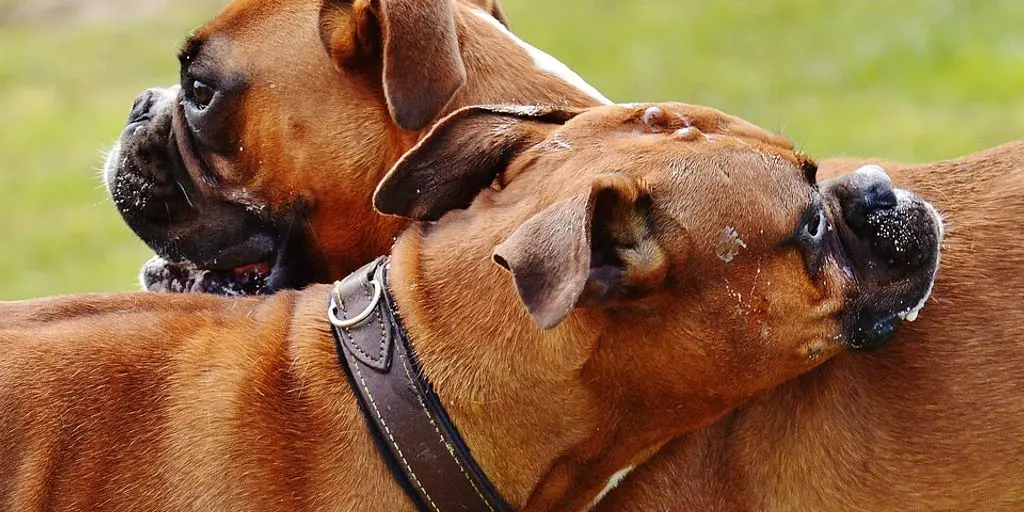Training your dog to stay within the boundaries of your yard can be challenging. One method that some pet owners consider is using a shock collar. While this method can be effective, it is crucial to understand how to use it correctly and safely. This article provides tips and tricks for using a shock collar to keep your dog in the yard, ensuring both success and the well-being of your furry friend.
Key Takeaways
- Understand the different types of shock collars and their features before making a purchase.
- Always start with the lowest shock level and use positive reinforcement to encourage desired behavior.
- Consistency in training is vital to ensure your dog understands the boundaries.
- Monitor your dog for any signs of distress or discomfort when using a shock collar.
- Consider alternative methods, such as invisible fences or training with treats, if a shock collar is not suitable for your dog.
Understanding How Shock Collars Work

Let’s dive into the basics of how shock collars function. These devices, also known as e-collars, are used to correct a dog’s behavior by delivering a mild electric shock. The collar has contact points that touch the dog’s skin, and a remote control allows the owner to administer the shock when necessary. But how exactly do these collars work, and what should you look for when choosing one?
Different Types of Shock Collars
There are several types of shock collars available, each designed for different training needs. Some collars are specifically for boundary training, while others are for correcting behaviors like barking or jumping. It’s crucial to choose the right type for your specific needs to ensure effective training.
How Shock Levels Are Controlled
Shock collars come with various levels of intensity, which can usually be adjusted via a remote control. It’s essential to start with the lowest setting and gradually increase it if necessary. Overdoing the shock can lead to anxiety and stress in your dog, so always monitor their reactions closely.
Safety Features to Look For
Modern shock collars come with several safety features to protect your dog. Look for collars with automatic shut-off mechanisms to prevent continuous shocking and those with adjustable intensity levels. Waterproof collars are also a good option if your dog loves water.
The way in which you use this collar ultimately determines its success (or lack thereof). Below, we provide some guidance regarding how to get the most out of your dog’s shock collar.
Choosing the Right Shock Collar for Your Dog

When it comes to picking the perfect shock collar for your furry friend, there are a few things you need to keep in mind. Every dog is unique, and so are their training needs. Here are some tips to help you make the best choice.
Training Your Dog to Stay in the Yard
Training your dog to stay in the yard can be a rewarding experience for both you and your furry friend. It requires patience, consistency, and the right techniques to ensure success. Here are some tips to help you get started.
Setting Up the Training Area
First, designate a specific area in your yard where you want your dog to stay. This will help your dog understand the boundaries. Use visual markers like flags or cones to outline the area. Make sure the space is safe and free from hazards.
Using Positive Reinforcement
Positive reinforcement is key to successful training. Reward your dog with treats, praise, or playtime whenever they stay within the designated area. This will help them associate staying in the yard with positive experiences. Remember, emphasize positive reinforcement techniques over punishment.
Consistency is Key
Consistency is crucial when training your dog. Make sure everyone in the household follows the same rules and uses the same commands. Regular training sessions will help reinforce the behavior. Over time, your dog will learn that staying in the yard is expected behavior.
Training a dog to stay in an unfenced yard is possible with patience and consistency. Start by teaching them to come when called and gradually introduce the concept of staying within the yard boundaries.
By following these tips, you’ll be well on your way to having a well-trained dog that stays safely in your yard.
Common Mistakes to Avoid
When using a shock collar to train your dog, it’s easy to make some common mistakes that can hinder progress and even harm your furry friend. Here are a few pitfalls to watch out for:
Overusing the Shock Feature
One of the biggest mistakes is overusing the shock feature. It’s tempting to rely on it heavily, but this can make your dog nervous and fearful. Instead, use the shock feature sparingly and combine it with other training methods.
Not Adjusting the Collar Properly
Another common error is not adjusting the collar properly. If the collar is too tight or too loose, it won’t work effectively and could cause discomfort or injury. Always check the fit before each training session.
Ignoring Your Dog’s Reactions
Pay close attention to how your dog reacts to the collar. Ignoring your dog’s reactions can lead to increased anxiety and stress. If your dog seems overly distressed, it might be time to reconsider your training approach.
Remember, the goal is to train your dog effectively and humanely. Avoiding these common mistakes can make a big difference in your training success.
Alternatives to Shock Collars
When it comes to keeping your dog in the yard, there are several alternatives to using a shock collar. These options can be just as effective and are often more humane. Here are a few methods you might consider:
Invisible Fences
Invisible fences are a popular choice for many dog owners. These systems use a buried wire that creates a boundary for your dog. When your dog approaches the boundary, the collar emits a warning sound followed by a mild static correction if they continue. This method can be effective, but it requires proper training to ensure your dog understands the boundaries.
Training with Treats
Positive reinforcement is a powerful tool in dog training. By rewarding your dog with treats when they stay within the yard, you can encourage good behavior without the need for a shock collar. This method not only keeps your dog safe but also strengthens your bond with them.
Using a Long Leash
A long leash can give your dog the freedom to explore while still keeping them within a safe distance. This is a great option for training sessions and can help your dog learn the boundaries of the yard over time. It’s a simple yet effective way to manage your dog’s movements.
Remember, the goal is to keep your dog safe and happy. Choose the method that works best for both you and your furry friend.
Ensuring Your Dog’s Comfort and Safety
When using a shock collar, comfort and safety should always be your top priorities. Here are some tips to ensure your dog stays happy and healthy while wearing the collar.
Real-Life Success Stories
Testimonials from Dog Owners
I’ve heard from many dog owners who have had great success using shock collars to keep their dogs in the yard. One owner shared how their Golden Retriever, Max, used to constantly escape, but after consistent training with a shock collar, Max now stays within the yard boundaries. Another owner mentioned that their stubborn Husky finally learned to respect the yard limits, making outdoor time much more enjoyable for everyone.
Before and After Training
The transformation in behavior can be quite remarkable. For instance, Teddy, a playful Labrador, used to dash out of the yard at every opportunity. After a few weeks of training with a shock collar, Teddy now enjoys off-leash time without any issues. The return on those very few momentary instances of pain has been enormous, as Teddy is now living a happier, more fulfilled life.
Expert Opinions
Experts agree that when used correctly, shock collars can be an effective training tool. They emphasize the importance of combining the collar with positive reinforcement and ensuring the dog is comfortable and safe. Many trainers have seen firsthand how a well-timed correction can make a significant difference in a dog’s behavior, leading to a more harmonious relationship between the dog and its owner.
It’s essential to remember that every dog is different, and what works for one may not work for another. Always monitor your dog’s reactions and adjust your training methods accordingly.
Addressing Controversies and Concerns

When it comes to using shock collars for training dogs, there’s no shortage of debates and differing opinions. Let’s dive into some of the most common concerns and controversies surrounding this topic.
Maintenance and Care for Shock Collars

Taking care of your dog’s shock collar is crucial to ensure it works effectively and lasts a long time. Here are some tips to help you maintain and care for your shock collar properly.
Integrating Other Training Tools
When it comes to training your dog, using a shock collar isn’t the only tool in your arsenal. There are several other methods and devices that can complement the use of a shock collar, making the training process more effective and humane. Here are some tips on how to integrate other training tools with your shock collar training.
Using Clickers and Whistles
Clickers and whistles are fantastic tools for training your dog. They provide a consistent sound that can be used to mark desired behaviors. For instance, you can use a clicker to mark the exact moment your dog performs a desired action, followed by a treat. This method is known as clicker training and is highly effective when combined with a shock collar. The shock collar can be used to correct unwanted behaviors, while the clicker reinforces positive actions.
Combining with Verbal Commands
Verbal commands are essential in any training regimen. Using a shock collar in conjunction with verbal commands can help your dog understand what is expected of them. For example, you can use the command “stay” while using the shock collar to reinforce the behavior. Over time, your dog will learn to associate the command with the action, reducing the need for the shock collar.
Incorporating Toys and Games
Training doesn’t have to be all about discipline; it can also be fun! Incorporating toys and games into your training sessions can make the process enjoyable for both you and your dog. For example, you can use a favorite toy as a reward for good behavior. This not only makes training more enjoyable but also helps to build a stronger bond between you and your dog.
Remember, the goal of using a shock collar is not to punish your dog but to guide them towards better behavior. By integrating other training tools, you can create a more balanced and effective training program.
In conclusion, enhancing your pet’s style: top dog collar accessories for 2024. Explore shock and bark collars for effective dog training and behavior management. Combining different training tools can make the process more effective and humane, ensuring that your dog not only learns quickly but also enjoys the training process.
Understanding Your Dog’s Behavior
Recognizing Stress Signals
Understanding your dog’s behavior is crucial for effective training. Dogs communicate their stress through various signals. Look for signs like excessive panting, yawning, or licking their lips. These behaviors can indicate that your dog is feeling overwhelmed. Recognizing these stress signals early can help you adjust your training methods to keep your dog comfortable.
Adapting Training to Your Dog’s Needs
Every dog is unique, and their training should reflect that. Some dogs may respond well to verbal commands, while others might need more visual cues. It’s essential to consider your dog’s temperament and learning style. For instance, if your dog is particularly sensitive, you might want to use more positive reinforcement techniques. On the other hand, a more stubborn dog might require a firmer approach.
When to Seek Professional Help
Sometimes, despite your best efforts, you might find it challenging to train your dog. If your dog shows signs of severe anxiety or aggression, it might be time to seek professional help. A professional trainer can provide you with tailored advice and techniques to address specific behavioral issues. Don’t hesitate to reach out for help if you feel overwhelmed.
Meeting your dog’s unique needs can be a game-changer in their training journey. Always be observant and ready to adapt your methods to ensure their well-being.
Conclusion
Using a shock collar to keep your dog in the yard can be an effective training tool if used correctly. Remember, it’s all about finding the right balance and ensuring your furry friend’s safety and comfort. Always start with the lowest setting and use positive reinforcement alongside the collar. Training your dog is a journey, and patience is key. With the right approach, you can create a safe and happy environment for both you and your pet. Happy training!
Frequently Asked Questions
How does a shock collar work?
A shock collar works by delivering a mild electrical stimulus to the dog’s neck when triggered by a remote control or an automatic system. The stimulus is meant to deter unwanted behavior or reinforce commands.
Are shock collars safe for dogs?
When used correctly and responsibly, shock collars can be safe for dogs. It is important to follow the manufacturer’s guidelines and start with the lowest possible setting. Always monitor your dog’s reaction and consult with a veterinarian if you have concerns.
What are the different types of shock collars?
There are several types of shock collars, including basic training collars, remote training collars, bark control collars, and invisible fence collars. Each type serves a different purpose and may have varying features and settings.
Can a shock collar be used on any dog breed?
While shock collars can be used on most dog breeds, it’s important to consider the dog’s size, temperament, and sensitivity. Some breeds may respond better to other training methods, so it’s best to consult with a professional trainer or veterinarian.
How do I choose the right shock collar for my dog?
When choosing a shock collar, consider factors such as your dog’s size, temperament, and training needs. Look for collars with adjustable settings, safety features, and good customer reviews. It’s also helpful to consult with a professional trainer for recommendations.
What are some alternatives to using a shock collar?
Alternatives to using a shock collar include positive reinforcement training, using a long leash, and installing an invisible fence. These methods can be effective in training your dog without the use of electrical stimulation.
How long does it take to train a dog with a shock collar?
The time it takes to train a dog with a shock collar varies depending on the dog’s age, temperament, and previous training. Consistency and patience are key, and it’s important to start with short training sessions and gradually increase the duration.
Are there any risks associated with using a shock collar?
There are potential risks associated with using a shock collar, such as causing fear, anxiety, or aggression in some dogs. It’s crucial to use the collar responsibly, follow the manufacturer’s guidelines, and monitor your dog’s reactions closely. Consulting with a professional trainer can also help mitigate risks.


